Arborvitae make excellent privacy screens, borders, and even container plants, but what to plant with them? Just as arborvitae vary in shape, size, and hue, so do companion plants for arborvitae vary greatly. Mix textures and heights to create layers of interest, perhaps planting tall, conical arborvitae in a back row with smaller, rounded shrubs or grasses in a middle section and low-growing flowers for a pop of color in front.

Companion Plants for Arborvitae
Arborvitae are evergreen shrubs and trees in the genus Thuja. Of the three most common species, eastern arborvitae (T. occidentalis) and western red cedar (T. plicata) are native to North America, while oriental arborvitae (T. orientalis) is native to Asia. While most arborvitae tend toward pyramidal or columnar growth habits, some cultivars maintain a rounded shape. The specific variety of arborvitae that you choose to grow will inform where you plant it and what you place around it. Here are some ideas for landscaping with arborvitae:
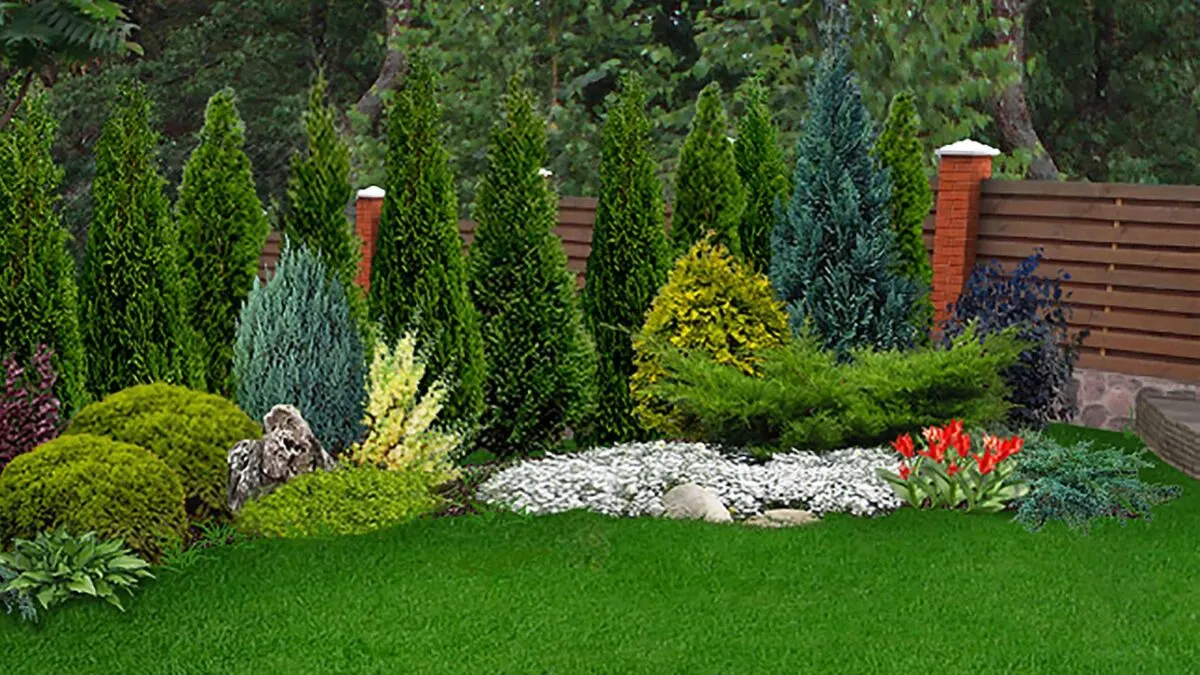
- Windbreak or screen
- Natural border
- Foundation planting
- Walkway or driveway accentuation
- Focal point
- Mixed border
- Wildlife habitat
- Container planting
Once your arborvitae has a purpose, it just needs some friends for a beautiful garden design!
The following plants pair beautifully with arborvitae, nicely complementing the typically conical evergreens. Remember to space the plants, accounting for their mature size properly. If the gaps seem overly large, plant some annuals in between to fill the empty spaces until the perennials come into their own.
1. Hydrangea (Hydrangea spp.)
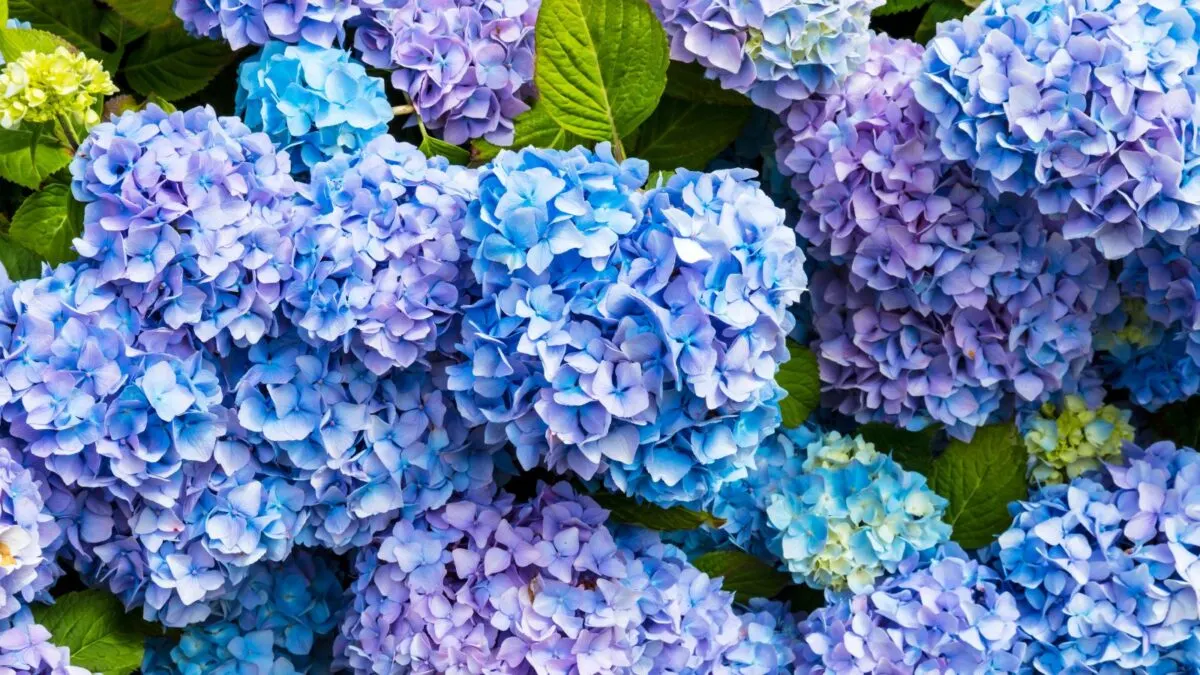
Consider including some showy hydrangeas for a splash of color for a mixed shrub border. These lovely deciduous shrubs have broad leaves and large globes of flowers in creamy white or, depending on variety and conditions, blue, pink, or purple. Because they tolerate partial shade, hydrangeas grow well in the shadow of taller arborvitae. Some species are native to North America, which means you can create a wildlife garden that looks like a formal landscape. It’s a win-win!
2. Redbud (Cercis canadensis)
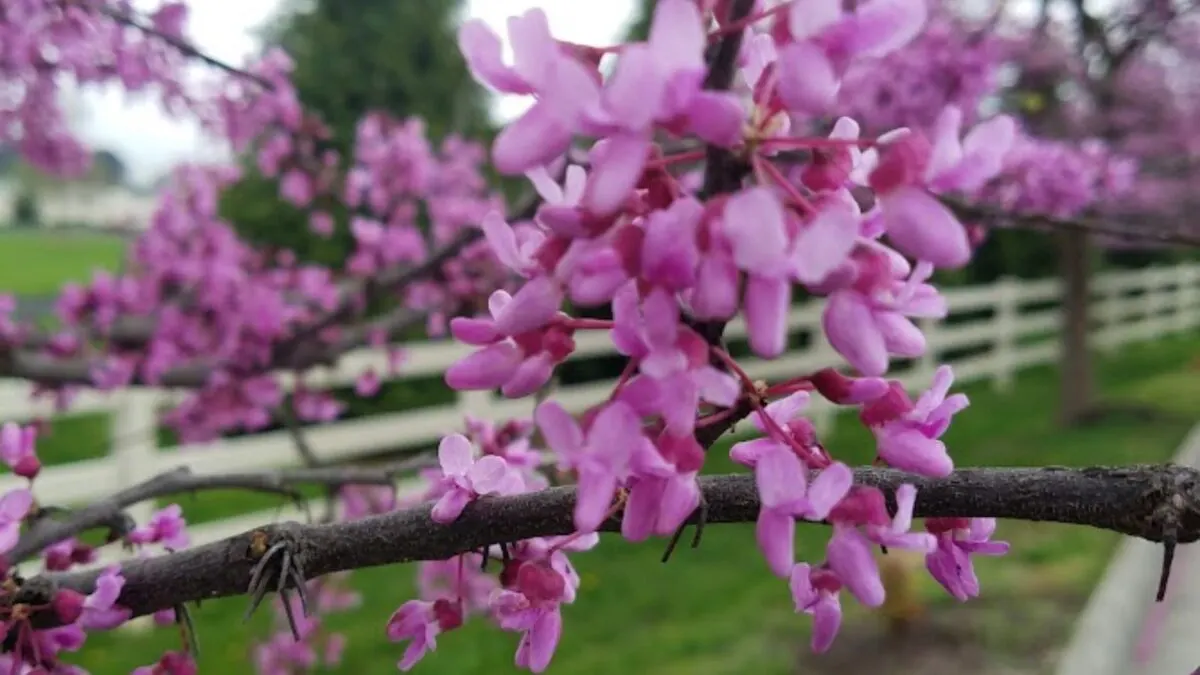
Small deciduous trees like Eastern redbud add a taller, branching structure to the garden, providing height alongside smaller arborvitae or a medium-tall layer next to the towering varieties. The broad, heart-shaped leaves of this native tree offer contrasting texture against arborvitae’s sprays of scale-like foliage. In spring, redbud’s namesake flowers bloom in a cloud of pink for a colorful display against the green backdrop of arborvitae.
3. Dogwood (Cornus spp.)

Dogwood adds structural and textural contrast to arborvitae like redbud with its broader deciduous leaves and exposed branches. The various species and cultivars of dogwood available produce orange, red, or purple fall foliage, showy spring flowers in hues from white to red, and sometimes clusters of red or purple fall berries. Several, such as flowering dogwood (C. florida) and Pacific dogwood (C. nuttallii), are native to North America.
4. Hostas (Hosta spp.)
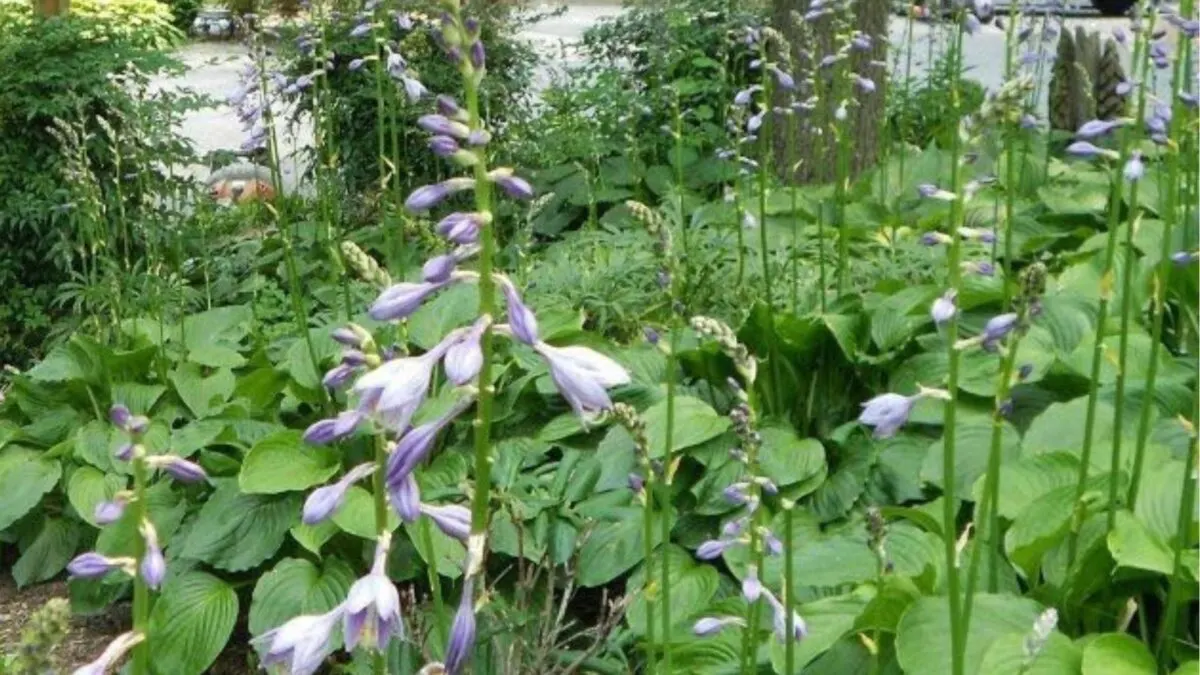
If you have tall arborvitae casting a significant amount of shade, hostas are an excellent choice of plant to grow at their base. These classic shade-loving plants have beautiful large leaves in various solid or variegated hues, perfect for pairing with coniferous foliage. Plus, they send up a tall flowering stalk with lovely blooms for a pop of color. Plant hostas along the front border of a bed containing arborvitae, mass them as a groundcover, or arrange them among other shade-loving plants.
5. Ferns (various)
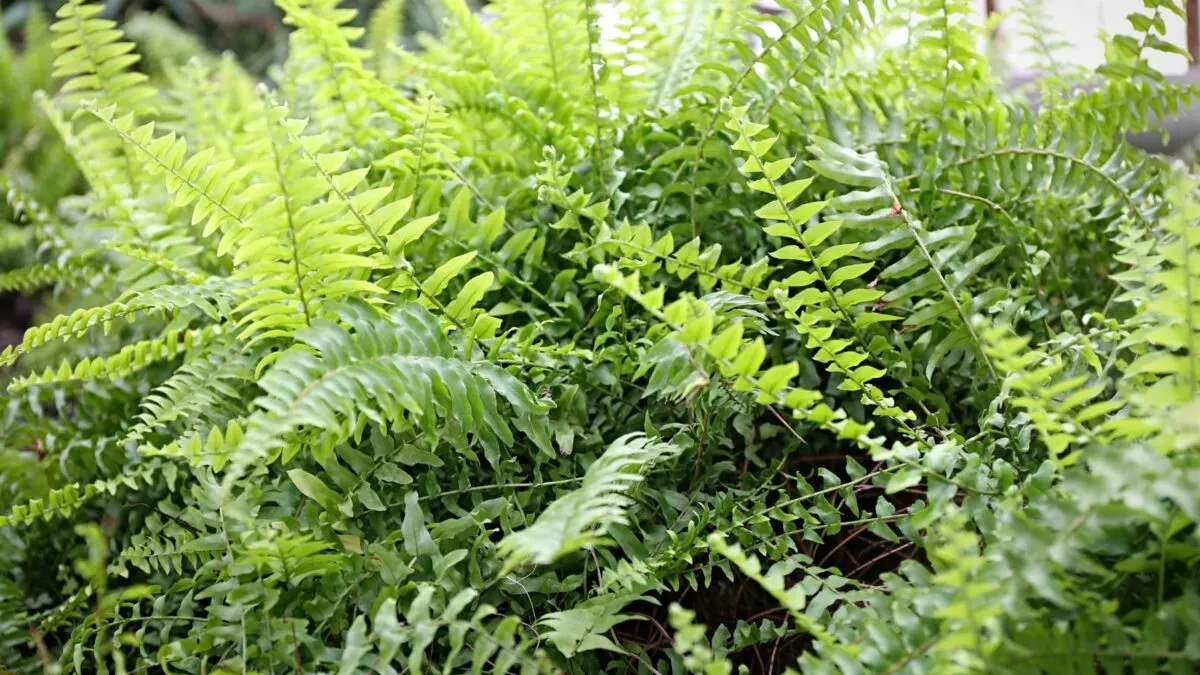
For a lush woodland appearance, plant ferns at the base of arborvitae, perhaps mixed in with hostas and other woodland plants. The feathery fronds nicely complement arborvitae foliage, and countless varieties mean you have your choice of size, texture, and shade of green. Native ferns paired with native arborvitae provide the bones for a nice woodland garden, making for a beautiful landscape design providing habitat.
6. Hellebores (Helleborus spp.)
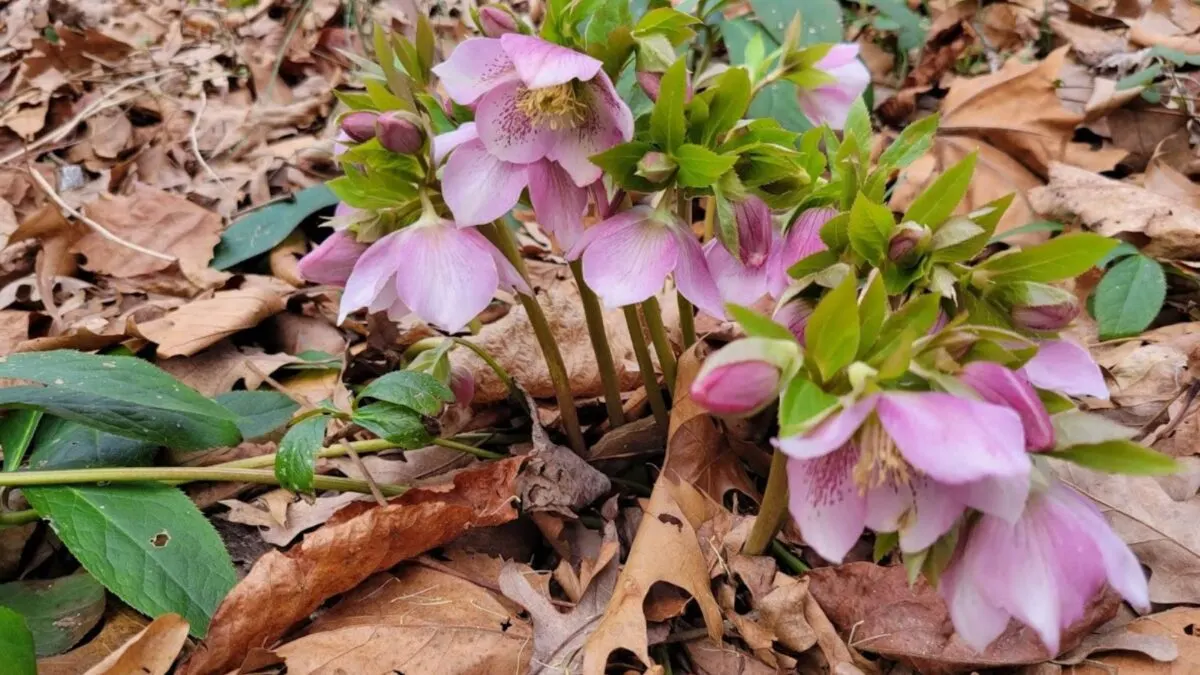
Often called Lenten roses because of their tendency to bloom in late winter, hellebores have lovely saucer-shaped flowers in shades ranging from white to pink to purplish-black. In addition to their late winter or early spring blooms, these shade-loving evergreen perennials have large, leathery leaves that provide winter interest, making them excellent companions for arborvitae. They grow just one to two feet tall and often spread to form clumps.
7. Wild ginger (Asarum canadense)
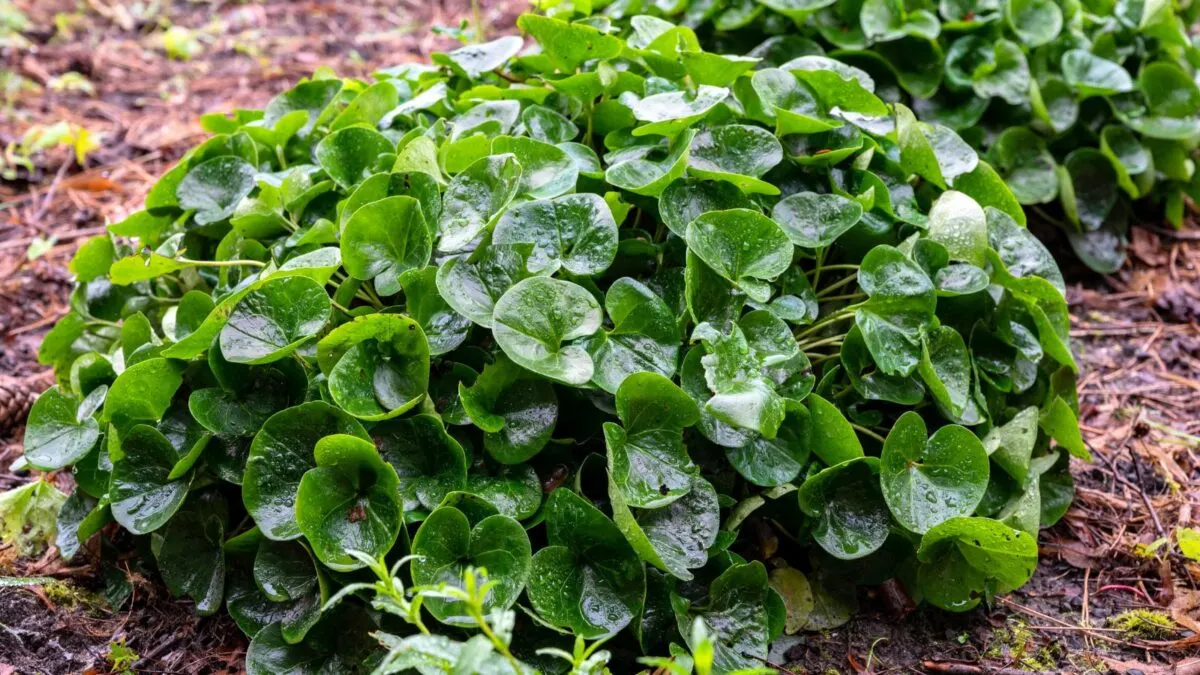
For an excellent low-growing, native groundcover, plant wild ginger around arborvitae. It grows to just eight inches tall with masses of large, heart-shaped leaves and spreads readily via the creeping, ginger-scented rhizomes that give the plant its common name. Wild ginger produces inconspicuous dark reddish flowers beneath the foliage in spring. Although A. canadense is perhaps the most common, other native (and non-native) species and cultivars also exist.
8. Coral bells (Heuchera spp.)
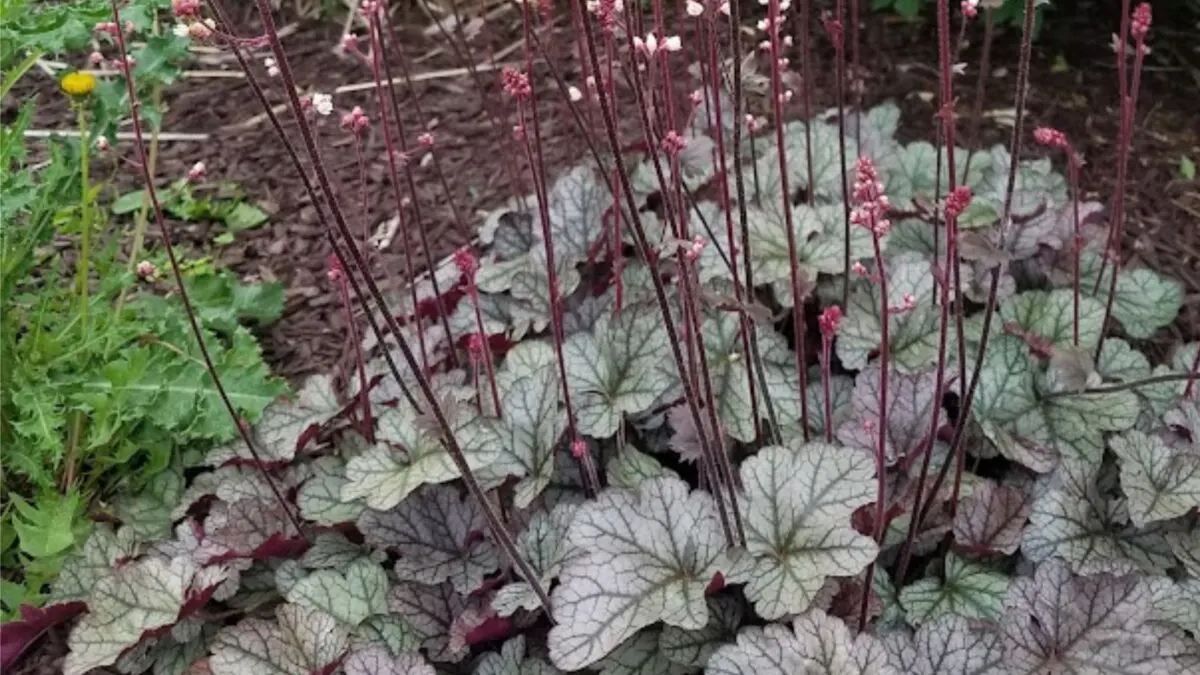
A semi-evergreen to evergreen groundcover, coral bells provide both year-round colorful foliage and lovely blooms. The namesake bell-shaped flowers bloom all summer in shades of white to burgundy, depending on the variety. The foliage color varies, too, with hues of green, red, and purple. While most varieties develop the best leaf color in full sun, many also tolerate some shade, especially those with lighter foliage. Some species, such as H. americana, are native to North America. Coral bells can also be grown in containers with small arborvitae cultivars.
9. Blue fescue (Festuca glauca)

With fine, bluish foliage that waves in the breeze, blue fescue adds color, texture, and movement to the base of tall, stately arborvitae. Cultivars of blue fescue range from one to three feet tall and grow in dense, rounded tufts. For native alternatives, choose California fescue (F. californica) or little bluestem (Schizachyrium scoparium). Many ornamental grasses pair well with arborvitae!
From privacy screens to container plants, arborvitae have endless possibilities in the garden. Choose from the arborvitae companion plants above for a winning combination, or experiment with your own ideas sparked from this list!


